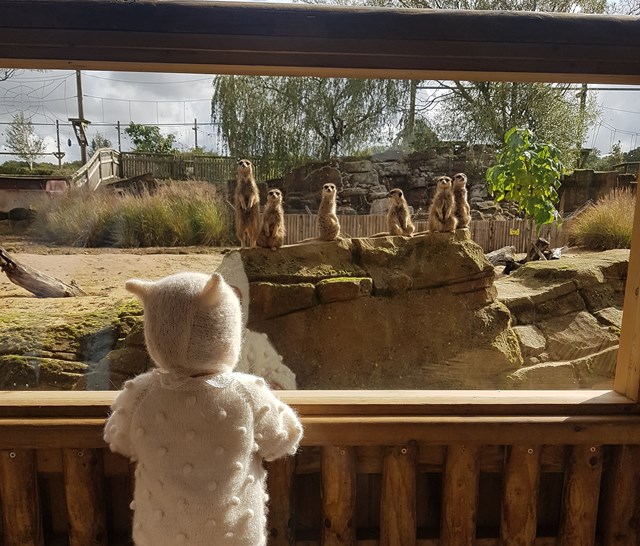What are communication boards?
Communication boards are used to help share messages with others. They are for everyone to use but can especially help children and adults who can understand more than they are able to say. They can use these boards to express themselves and interact with others. They have words, pictures and symbols and can also help individuals understand new words.
There are five communication boards at Woburn Safari Park to help individuals communicate about a wide range of topics including the animals, leisure facilities, food and drink and self-care.
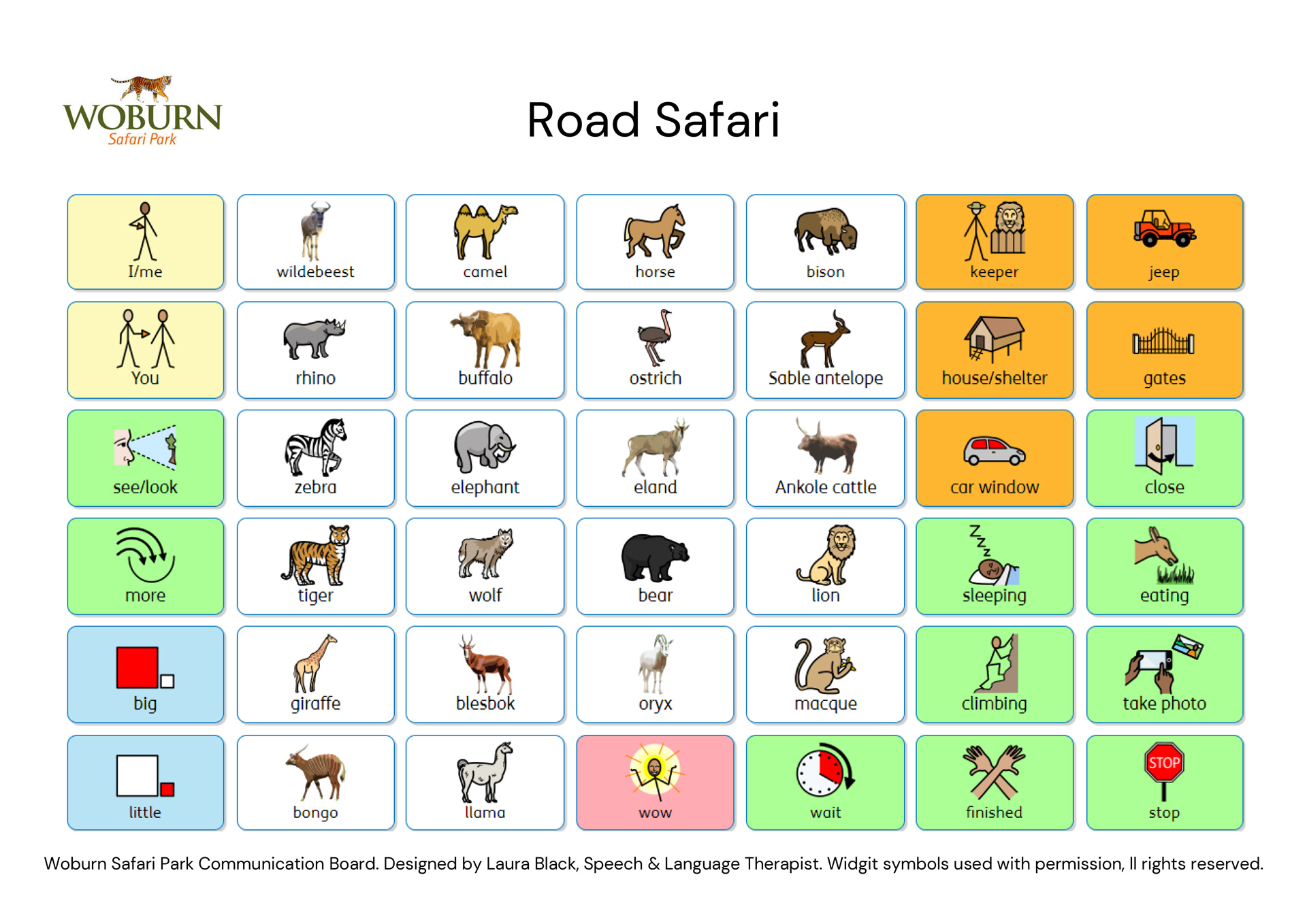
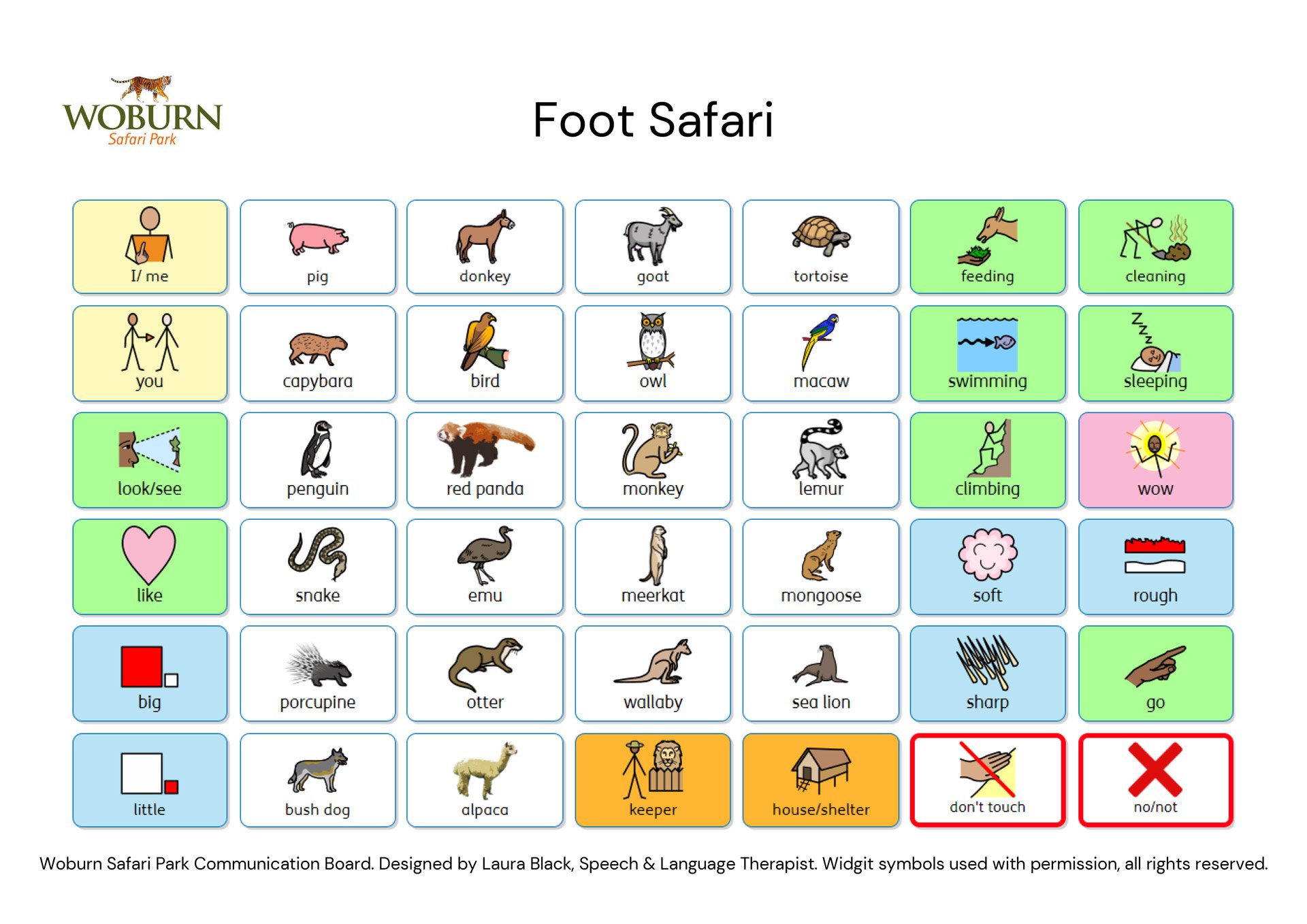
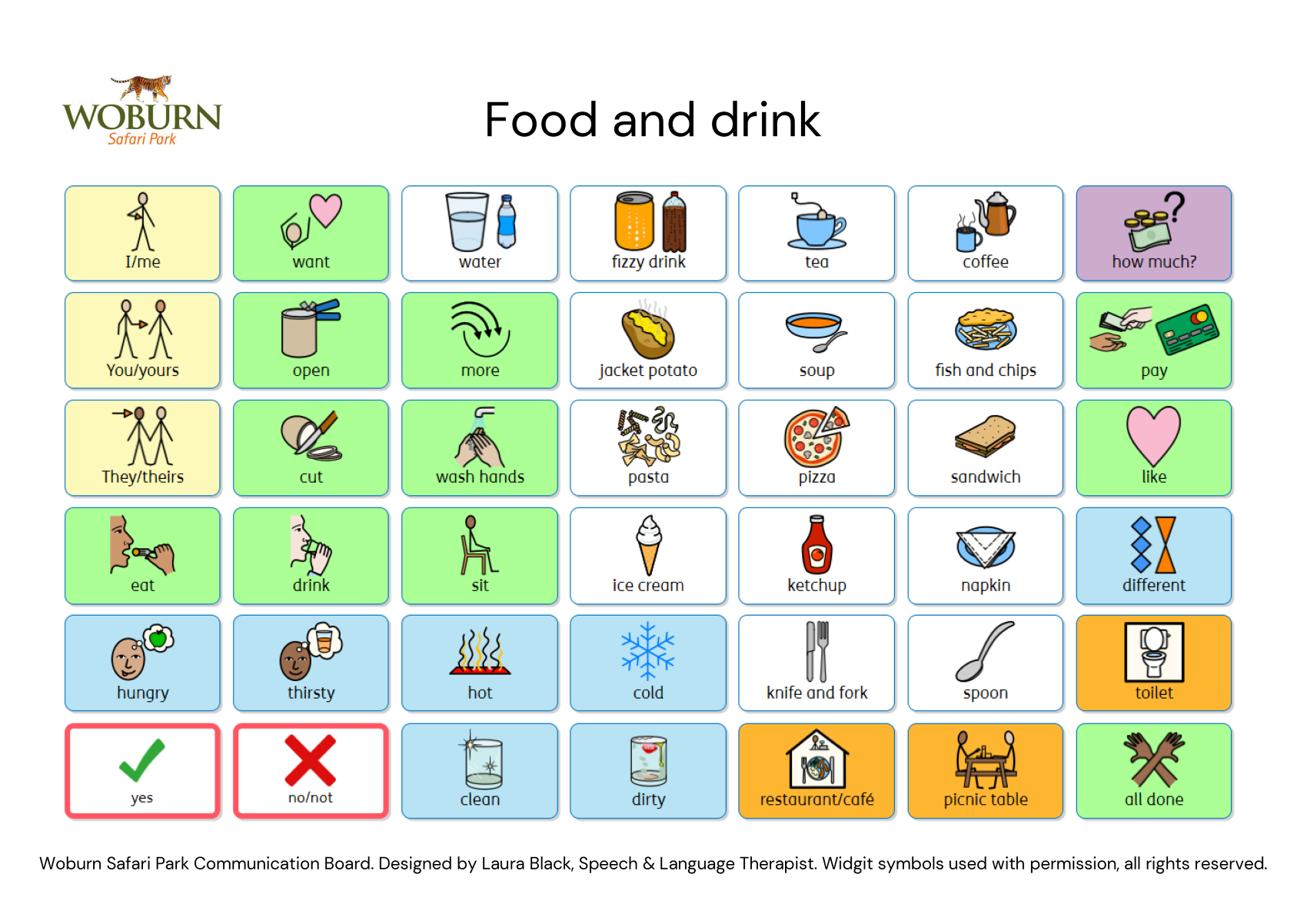
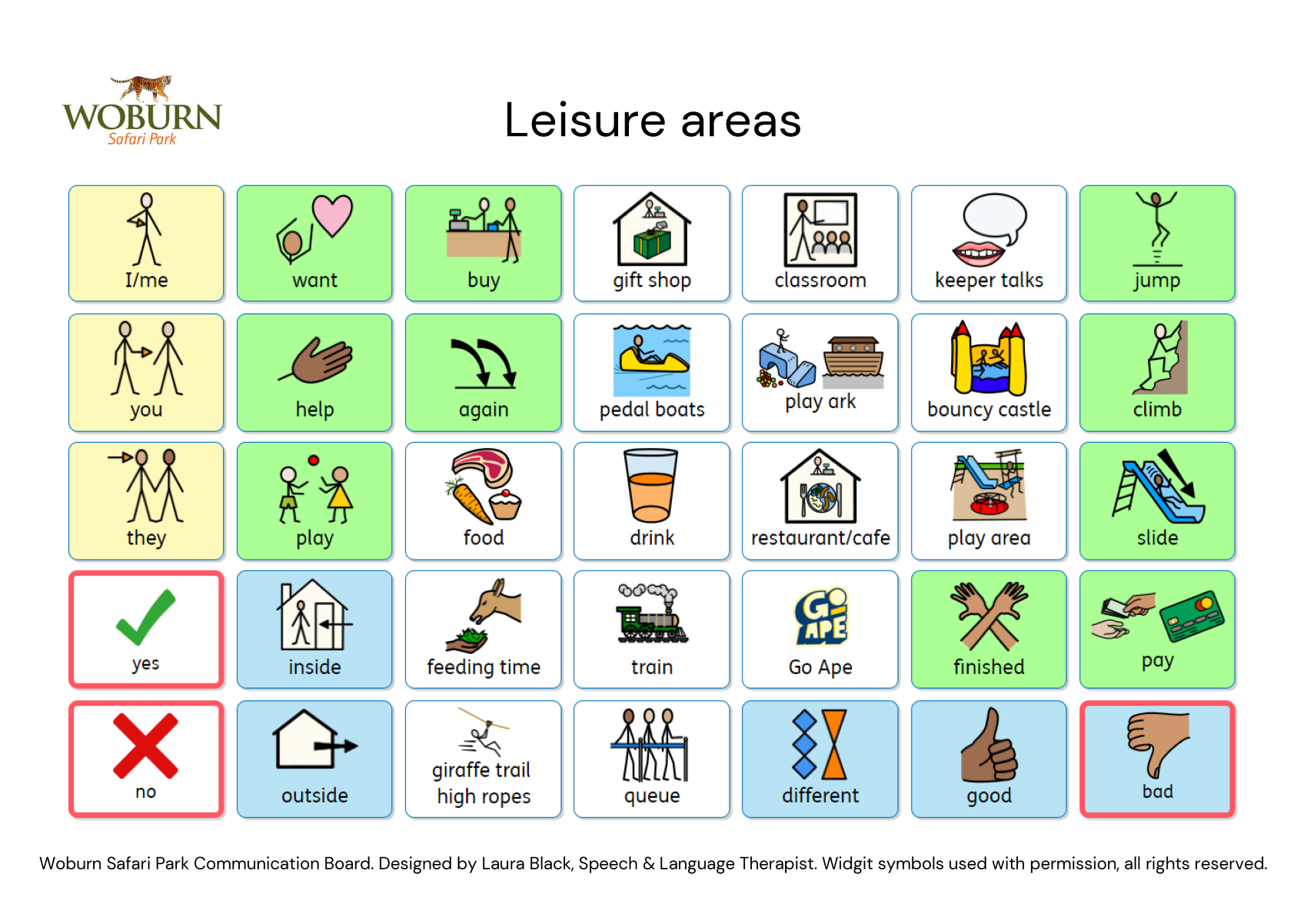
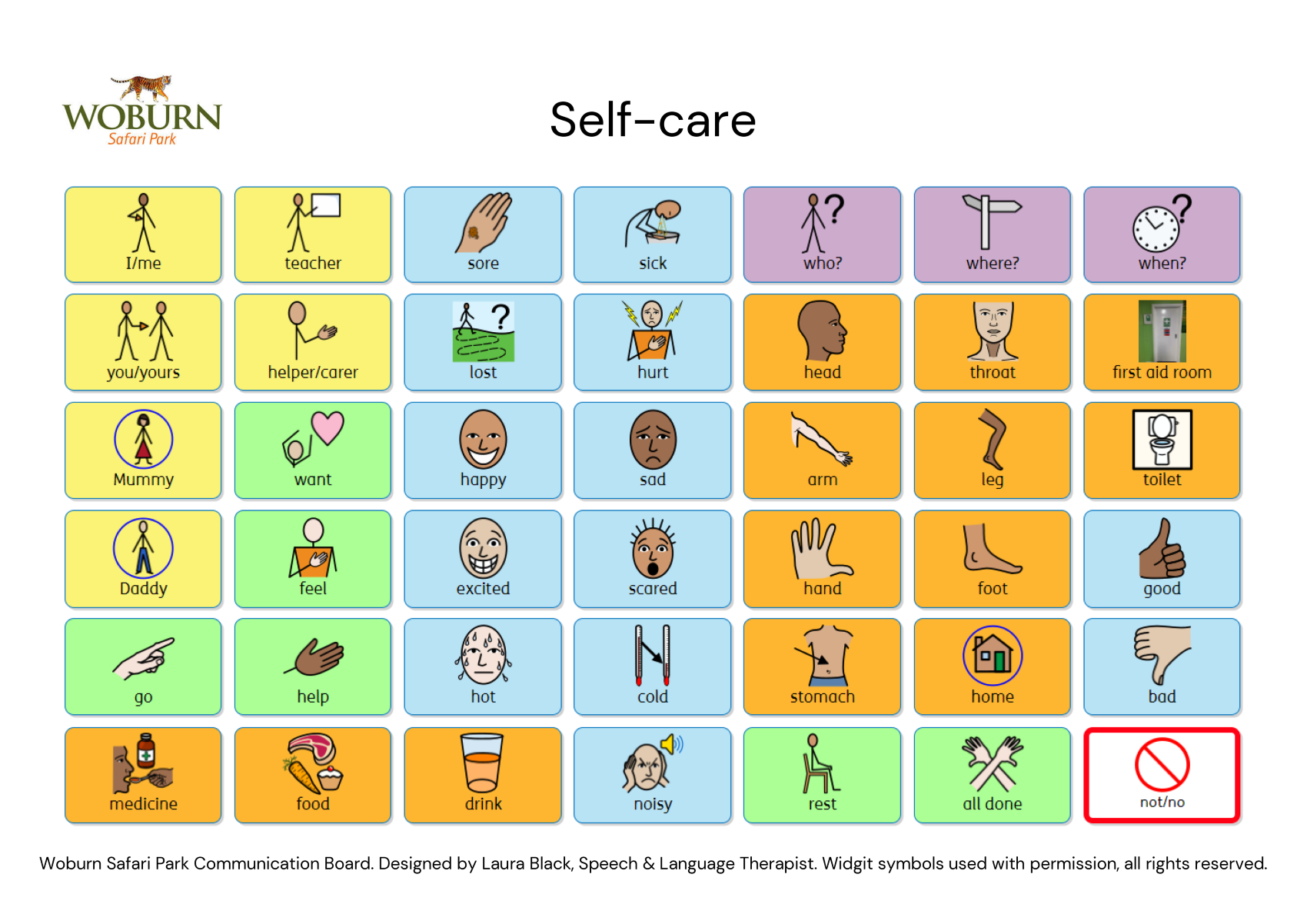
How to use communication boards
*Below we use the word ‘communication partner’. This is referring to the individual using the board to express themselves e.g. your child, a student or an adult in your care.
1. To help with understanding
We need to understand what a word means before we are able to use it. Communication boards help to link spoken words, real objects and pictures/text together.
- Choose a word you think your communication partner might be interested in and point to it on the board.
- Say the word as you point to it.
- Point at, hold or move towards the real object you have been talking about.
- You can add a gesture or sign to help their understanding further.
- Learning words takes time! You might have to do this several times before your communication partner understands the word’s meaning.
2. To help with using words
- Make sure the communication board/s are easily accessible.
- If your communication partner is new to using them, model what you think they might like or say by pointing to the word/s and saying them e.g. ‘Look, zebra!’ or ‘I like penguins’.
- Give them time! Pause and let them look at the board. They will need to familiarise themselves with the words and layout before they use them.
- You can encourage communication by using a sentence starter e.g. ‘I see…’ or ‘I want…’ and then pause to let them finish.
- You can offer choices e.g. of which animal they would like to see next or which food they would like from the restaurant etc.
- Do not worry if they don’t point to the pictures right away. In the same way that it takes us several times to hear new words before we can say them accurately in the right context, it can take several exposures of seeing words modelled on the communication board before individuals use it back. Repetition and consistency is key!
- Model words at their level- if your communication partner understands one word at a time, start by pointing to and saying one word at a time. You can then gradually build to making short phrases and sentences e.g. ‘Bear’, ‘Little bear’, ‘I like bears’, ‘Look, the bear’s sleeping!’
Top tips for using your new communication boards
Click here to print our communication boards before your visit. Alternatively, you can display the PDF on your tablet or other electronic device.
Familiarise yourself with the layout and vocabulary before your visit.
You can use the boards before your visit, to talk about the animals you might see.
If an individual in your party has sight or fine motor difficulties, it might be beneficial to print the boards onto A3 pages.
The boards are available with coloured backgrounds (to help categorise and find the vocabulary easily) as well as plain backgrounds. Chose the version that suits you or the individual using the board best.
